-
Posts
271 -
Joined
-
Last visited
-
Days Won
23
Content Type
Profiles
Forums
Gallery
Events
Articles
Blogs
Downloads
Community Map
Posts posted by Fretless
-
-
4 hours ago, Nutty 1 said:
Any comments would be gratefully received.
I have been here long enough to see your progress to date. I am so impressed at seeing your steady and continual improvement to the point that this song demonstrates - and that is that you are the whole package: you can sing, you can play, you can record and edit audio and video, all to a competent level, none of which I can remember seeing 4 years ago, and added to that you deliver your songs with a great sense of humour and the sparkliest guitar I have ever seen!
-
 3
3
-
 1
1
-
-
Nicely done, Dan, you had me singing along.
Nutty, thank you so much for all your work keeping this topic together.
-
 1
1
-
 1
1
-
-
What a year, Marty! I don't know you personally but I am so glad to hear how you have progressed once you got past the heart attack and then the surgery.
Congratulations on the Fender Blues Jr. Here's wishing you a lovely Christmas and New Year and I look forward to hearing about further progress, both physically and with L&MG during the next year.
-
Neil, I came at it from the opposite approach - I looked to find which app would best do the job I wanted it to do and then I checked out which tablets would it run on.
I now use my tablet for a handful of major things and lots of little extras but I still to this day say the reason I have a tablet is the app that serves as my music library and organiser.
-
 1
1
-
-
If you make a mistake at some point, repeat it in the next verse and people will think it was intended. My guitar teacher said that.
-
 1
1
-
-
Retreat? It sounds more like an adventure!
I tune my classical guitar one semitone high for the first few days to help the strings settle. 24 hours is not long; I hope it all works out well for you, Diane.
-
 1
1
-
-
22 hours ago, Eracer_Team-DougH said:
...
I'm able import all my songs into it and create "set lists" which I use a lot (mostly for my church gig)
...
What apps are you using to create "set lists"
There are so many tablets and apps that I was about to just move on as I don't have a wide range of experience.
If your last quoted sentence is a question, Doug, then my answer for the last 8 years has been that I bought an iPad to run OnSong. Jason, who got it going, is a worship leader and so he knows exactly what church gigs (to use your wording) require and at that early stage I was (and still am) happy to support him. The current $30 price tag is not cheap but OnSong has now added many added features, some of which I use, some I don't. I would not say it is better than ForScore or Music Stand but like many programs, so long as it does what you need, why change? That does mean that you are wise to delay your purchase and find out as much as you can so that you will be happy with whichever tablet and app you choose.
Because I play drums, guitar and flute, I prefer lead sheets so I want to have some level of sheet music rather than the more common lyrics with chords above without any indication of timing, I posted a video 8 years ago to YouTube reviewing how OnSong handles sheet music. It happens to be my most popular video by a long mile.
Now, 8 years later, the principles in the video still stand. I have changed from using images to PDFs, which makes file sizes smaller. Last month I moved from playing drums to leading on guitar because our worship leader is taking a break. That prompted me to buy an AirTurn BT200S-6 pedal, which I had dilly-dallied over for some years but now I would not want to be without it.
It is indeed an interesting road to be travelling and I wish you all the very best in finding what suits you. If you have any other questions, do ask. I would also love to know what you do buy when that time arrives.
When you have you new tablet and app I could let you have one of my PDFs so that you can see how I get the most out of having my music on my iPad.
-
 3
3
-
-
William, I see two topics here: one about a 12-string and another about the bigger picture of which guitars might make up a decent and varied collection for you. You have already had some helpful advice regarding a 12-string so can I pick up on the second topic?
After many years of playing just one my curiosity grew, as I see it has with you in your reply above, and I went through a phase of buying a range of guitars. Eventually I got to the point where I had 20 guitars. After a while I started to realise that some of these guitars were, in my hands, far better than others. Once I was certain, I sold the guitars that were not ideal for me - but no doubt would be ideal for someone else. I am intentionally not mentioning which brands or models I kept and which I sold as your experience will produce different results to mine. I would encourage you to enjoy the searching, the experimenting, the buying and selling as I have ended up with just a few guitars that I know are clearly the best ones for me and I can now look at other guitars knowing that I am content not to be thinking about what out there might be even better for me. I hope you have a great journey of discovery and end up as happy and content as I am - and do let us know which 12-string you opt for.
-
 2
2
-
-
I would, as usual, love to be involved but I have just gone down with flu so if you need anything once my energy returns I'll help out then.
-
 2
2
-
-
Ian, perhaps the simplest ending I can suggest is to not strum the final C chord as you sing the final word, down, just silence the guitar for that final word and then, after a pause of perhaps one bar, slowly strum a Cmaj7 but from top to bottom. If I am not explaining myself clearly and you would like an audio example, just say. Otherwise, nice, straightforward song and I can hear how your voice has improved. Great stuff!
-
 1
1
-
-
Does your app (better the audio app than the video app, as Eracer says) have a recording volume control so that you can increase the gain on a weak sound and turn down a loud signal?
Is the distorted sound just on certain accented places or on the whole recording?
If you are struggling, send me a sample recording. Ask for my email address by PM.
-
<Sherlock Holmes's curious voice> "Interesting, most interesting."
-
 1
1
-
-
I think it is great that you have tried a different material and heard which you prefer. I would call that success.
-
 1
1
-
-
pkotof, one more thing, if I may: when you take your guitar to be set up I think it will help the technician if you also take your acoustic to show him the differences and what you prefer, because while one player may want a really low action, others want a bit higher. The techie will need to work out what you want so that he can set it up for you, not just a generic setup.
-
2 hours ago, pkotof said:
My electric is a Squire Modified '51 that I like a lot, but as a bargain guitar, it is more challenging to play.
Why do say it is more challenging? My first thought was that it has not been set up properly but maybe I should hold my thoughts until I know more about what you mean by more challenging.
-
Bass amps and keyboard amps share much in common. Guitar amps, and particularly guitar speakers, have quite different characteristics as they colour the guitar's sound.
The all in one solution would be to have an effects unit such as a Kemper or Helix LT (or much cheaper) which has amp and cab modelling. These work best with a FRFR (full range, flat response) PA speaker, and you would choose a bass amp and cab or a guitar amp and cab within the software to get the desired sound.
-
 1
1
-
-
It is worth a try. If you are unfamiliar with cutting a new nut buy a cheap plastic one and cut that one. If you get it worng then another plastic one will be cheap. When you are happy with the new nut, you then have a template from which to repeat the process with a bone or tusq nut. Sometimes I buy a pre-cut nut that has a fraction narrower string spacing E-E than the one on the guitar at the moment. There are plenty of videos on YouTube to help with showing you how to do the job. To glue to new nut in place just use two small droplets of superglue as it does not soak into the wood.
-
 1
1
-
-
Truly amazing, Danny. Well done!
-
 2
2
-
-
Many metronome apps have a training facility whereby you can select start and finish tempos and how long it takes to ghet from the first to the second. It is good for starting off a slow tempo and steadily, gently increasing the tempo as you practice longer.
If your metronome does not do this and you would like to practice this way, tell me and I can produce some audio files to help you: you just need to choose the start and finish tempos and how long you would like to practice for.
-
Thanks, gotto, that is very kind of you.
-
Nutty, I think all the right praise and encouragement has already been given so I will simply agree with them as you progress is noticeable.
One suggestion from watching your video: try placing the microphone so that when you are looking down towards your guitar you are singing into it. Okay, not that low but try half way between where it is and where it could be so that your head is swinging to either side of the mic, not up to it and then down, away from it. I think you will get a more consistent vocal level although you will start finding the vocal mic picks up a little of the acoustic guitar sound, which may or may not be a bad thing. Try it and see.
-
 1
1
-
-
That's good to hear, Nutty 1. I must go and find your Recording Challenge track to hear your new-found ability. As ever, I am happy to give constructive advice but only up to the point where you overtake me!
-
 1
1
-
-
Similar to Neil, I would say that the guitar that inspires you to play is the one to start with. As your ability and tastes grow then venture out into other styles, genres and types of guitar and maybe even other instruments.
-
 1
1
-
-
Rainsong got the ball rolling and now we have Klos, Journey, Composite Acoustics, Emerald and probably more now producing carbon fibre guitars, as the competition picks up prices will drop and long term experience will help manufacturers develop better quality and better sounding guitars.
You can pick up a bottom end carbon fibre guitar from around 700 (USD or £), so they are not all in the €2,500 region, although Emerald seems to be aiming at the higher quality end of the market.
Jazz players are discerning - or fussy, depending on your viewpoint - and so you might find this article helpful: Composite Acoustics, Rainsong, and other carbon fiber flattops
-
 1
1
-

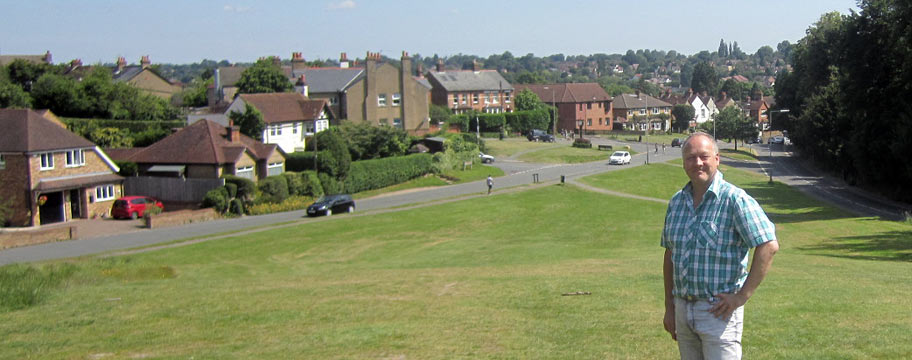
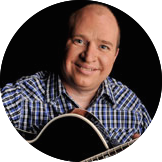
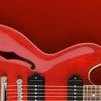
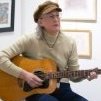
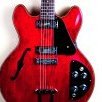
🕶Monthly Recording Challenge 76 - The Blues or Rock 😎
in Guitar Playing & Technique
Posted
Wow!